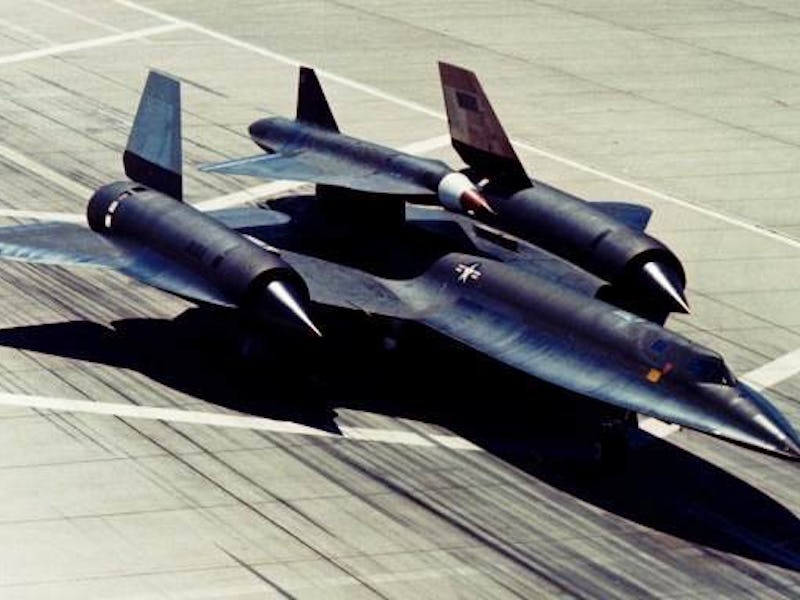50 Years Ago, the Lockheed D-21 Drone Made Supersonic History
The Lockheed D-21 drone had a need for speed over steering.

Fifty years ago, on March 5, 1966, unmanned aircraft made supersonic history when a Lockheed D-21 drone launched off of the back of an M-21 Blackbird traveling Mach 3. The US always wanted speedster surveillance drones, and the D-21 — codenamed Project Tagboard — delivered smashingly. Unfortunately — depending on one’s perspective — what it had in power thanks to its ramjet engines, it lacked in computing muscle.
Mach 3 is incredibly fast, even by today’s drones standards — but such speed ment every mission with a D-21 was, by design, one-way. The Museum of Flight in Seattle, Washington, lays out a typical mission like this:
the D-21 drone would follow a pre-programmed flight path over areas of interest. Then the drone would return to international airspace, where the reconnaissance film package, equipped with its own parachute, was ejected. The package was then recovered in mid-air by a specially equipped airplane or at sea by a ship. Shortly after the film package was jettisoned, the drone self-destructed.
Though the D-21’s job could be distilled to such simple steps, the actual cleaving of daughter drone from mothership was a complex ballet of aerial separation. It was not without disaster. In July 1966, the separation of the D-21 from the mother Blackbird went horribly awry. The drone hit the Blackbird’s shock wave and tumbled, exploding into the airplane. The pilot managed to safely escape the wreck, but the launch officer, Ray Torick, drowned when he fell into the Pacific.
Test flights continued with modified D-21B drones, culminating in four successful surveillance missions over the Chinese Lop Nor Nuclear Weapons Test Base. By the early ‘70s, out of Richard Nixon’s desire to improve US-China relations and the drone’s poor performance, the project was shelved. The last flight of a D-21, in 1971, ended inauspiciously as the drone’s controllers lost it somewhere over China.
Of course, the military-spy love affair with UAVs would persist. The CIA began flying drones in Afghanistan at the turn of the 21st century, but the agency wouldn’t weaponized them until after the September 11 terrorist attacks. Weaponized drones led to a strange dichotomy of hyper-personal and remoteness on an unprecedented. “On the one hand,” writes Human Rights Watch director John Sifton at The Nation, “we have the most intimate form of violence—the targeted killing of a specific person, which in some contexts is called assassination—while on the other hand, the least intimate of weapons.”
Today’s military drones have exploded into an evolutionary tree of machines, from the larger Reaper and Predator to shrunken micro-drones and, perhaps in the near future, drones customized overnight for specific missions. They may have more intelligent computer guts, but the raw speed of the D-21 remains unmatched.